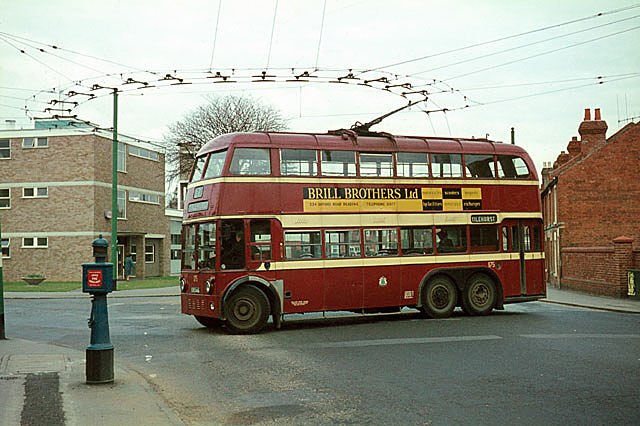Trolleybuses in Greater Boston
The Boston-area trolleybus system formed part of the public transportation network serving Greater Boston in the U.S. state of Massachusetts. It opened on April 11, 1936, with a large network operating for the next quarter-century. Measured by fleet size, the Boston-area system was the second-largest trolleybus system in the United States at its peak, with only the Chicago system having more trolleybuses than Boston's 463. After 1963, the only remaining portion was a four-route cluster operating from the Harvard bus tunnel at Harvard station, running through Cambridge, Belmont, and Watertown. The Massachusetts Bay Transportation Authority took over the routes in 1964.
A trolleybus on route 71 leaving the Harvard bus tunnel in 2006
Pullman-Standard trolleybuses at North Cambridge Carhouse in 1967
A Flyer trolleybus in the upper level of the Harvard bus tunnel in 2003
1976 Flyer E800 trolleybus at Cambridge Common, followed by the newer Neoplan AN-440LF trolleybus
A trolleybus is an electric bus that draws power from dual overhead wires using spring-loaded trolley poles. Two wires, and two trolley poles, are required to complete the electrical circuit. This differs from a tram or streetcar, which normally uses the track as the return path, needing only one wire and one pole. They are also distinct from other kinds of electric buses, which usually rely on batteries. Power is most commonly supplied as 600-volt direct current, but there are exceptions.
Busscar trolleybus in São Paulo, Brazil
Solaris trolleybus in Landskrona, Sweden
The "Elektromote", the world's first trolleybus, in Berlin, Germany, 1882
A double-deck trolleybus in Reading, England, 1966








